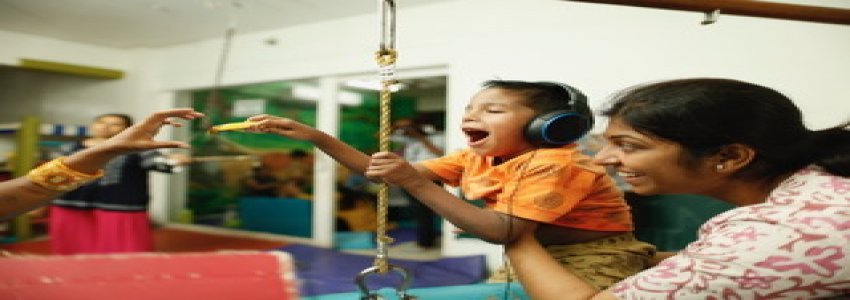Therapeutic Listening

What is Therapeutic Listening ®?
Therapeutic Listening ® is an “evidence-based auditory intervention intended to support individuals who experience challenges with sensory processing dysfunction, listening, attention, and communication.” It’s not a stand-alone program. Therapeutic Listening® (“TL” for short) is one tool that can be used as part of a bigger-picture therapy program based in sensory integration, along with the use of a daily sensory diet (but I like to refer to it as a “sensory lifestyle”).
Basically, kids (or even adults) wear special headphones that play special music which has been “filtered” or modified in order to expose the nervous system to “low sounds” (below 1,000Hz, related to vestibular and postural functions), “mid range sounds” (1,000-4,000Hz, related to key speech sounds), and “high sounds”(›4,000Hz, related to attention, discrimination, and emotional subtleties) at various times throughout the music track. In addition to filtering, the music has also been specially crafted or selected based on the type and number of instrumentsused (percussion, bass, stringed instruments all affect the nervous system differently) as well as the rhythm (beat, pattern, repetition, tempo), melody, and even the physical space in which the recording was made. Music selections range from nursery songs to nature sounds to classical music to upbeat/pop songs and more.
What does Therapeutic Listening ® do?
Though Therapeutic Listening ® impacts kids’ nervous systems in MANY ways, here are five main highlights of what it does:
- 1. Influences kids’ extreme patterns of seeking or avoiding movement
- 2. Influences kids’ understanding and use of their body in space (including motor skills, timing, planning, and coordination)
- 3. Influences kids’ arousal and activity level so their “Engine” can be “Just Right”
- 4. Influences kids’ biological rhythms that they may struggle with such as sleep/wake cycles, hunger/fullness, bowel/bladder control, respiration, etc.
- 5. Influences kids’ ability to use and control their eyes in relation to their head and body
This program uses sound to address functional goals such as improved engagement, social participation, ability to tolerate transitions, communication, learning/academic performance, attention, self-help skills, tolerance for new foods and clothing textures, and even improved handwriting performance. According to the course instructor, most parents report their child’s first responses to TL include changes related to engagement and movement (vestibular: balance, spatial orientation, postural control).
How is the Therapeutic Listening ® Program structured?
In general, children listen to a particular therapist-selected CD for two weeks, at a rate of twice per day for 30 minutes each, with at least three hours in between each listening session. Because Therapeutic Listening ® is a HIGHLY individualized program, it does not follow a cookie-cutter approach. Every child’s plan will be different. Trained therapists use their clinical reasoning to choose and adjust music selections based on the child’s needs/history, the parent’s concerns, and the child’s response to each CD. It is highly dependent on clinical observation and open communication between parents and therapist. Music selections are divided into three categories (Engagement, Interaction, Discrimination) and children are assigned one of three “profiles” in order to guide the therapist in choosing music selections that will best address the child’s needs as they move through one or all three of the categories. Children typically spend a minimum of 12-16 weeks engaging in their individualized program; most will spend even longer depending on their needs and response to each phase of the program.
Who can benefit from doing the Therapeutic Listening ® program?
Everyone! Well…almost. Therapeutic Listening ® should NOT be used with individuals with schizophrenia, auditory-evoked seizures (which are rare), or during active ear infections (prior to 24 hours of antibiotics). It can be used (some with special considerations) for individuals with hearing aides, cochlear implants, Traumatic Brain Injury, Fetal Alcohol Syndrome, children under two, and even premature infants in the NICU (so cool!). As mentioned above, this program is meant to be used as part of a therapy program that utilizes additional sensory integration techniques to address bigger picture needs that influence a child’s ability to function in his or her daily life.
So, yes, kiddos and teens with SPD, Autism/Asperger’s, developmental delays, Down Syndrome, Cerebral Palsy, visual motor/handwriting difficulties, ADD/ADHD, generalized anxiety, social anxiety disorder, difficulties with executive function, and even/especially those with no diagnosis or who don’t qualify for school-based services but clearly have needs affecting their learning or function in their school or everyday environment…all will benefit! After taking this training, I’m even thinking I need a bit of Therapeutic Listening ® intervention for myself! We all have our own issues, right?
What programs can be used in conjunction with Therapeutic Listening ®?
For those of you therapists who are reading this, you can certainly use TL in conjunction with interventions such as the Astronaut Training Program, Core Concepts in Action, Rhythmic Movement Training, Interactive Metronome, The Alert Program/How Does Your Engine Run, ZONES of Regulation, R.O.P.E.S. Program for improved executive function, and even Handwriting Without Tears. Any others I didn’t list that you would recommend?
How do I get started with the Therapeutic Listening ® program?
First you or your child must be under the supervision of a therapist trained in the use of the Therapeutic Listening ® program. Ask your child’s therapy provider about this or find a certified provider on the Therapeutic Listening ® website by visiting www.vitallinks.net and then clicking Find a Practitioner (or just click here). Once you find a TL provider, discuss whether it would be a good fit for your child and your family. I’ll be honest — it’s a commitment. Two 30-minute sessions a day, seven days a week for at least three to four months? That kind of schedule is not for everyone, and there may be other ways to address your child’s needs and functional goals. Plus, just because it’s not right for you right now doesn’t mean it may not be great at some point in the future.
If you and your child’s therapist decide to begin Therapeutic Listening ®, you may have to purchase some equipment designed specifically to access the therapeutic benefits of the program. As mentioned before, the headphones are specifically designed for use with TL (find online here) and the music selections are customized for the program as well. Music can be played from CDs using a regular portable CD player (secured in a backpack or hip pack), or it can be accessed in the form of a Sansa clip that attaches directly onto the special headphones so you don’t have to worry about dealing with discs. Music should not be burned onto other CDs or compressed into separate MP3 files because it will affect the range of sounds transmitted in music and will compromise the music’s therapeutic effects. Many clinics or therapists may be able to work with families in terms of lending out parts of the program (such as the music) while expecting them to fund some of it themselves (such as buying their own set of headphones and CD player/Sansa clip). Talk with your therapy provider to find out more about their policies regarding this program.
Where can I find more information about Therapeutic Listening ®?
Visit the Vital Links website at www.vitallinks.net Equipment ordering information can be obtained at www.vitalsounds.com.
If you have any further questions about how the Therapeutic Listening ® program works please leave a comment below, or contact a certified provider in your area (click here) and discuss your specific questions or concerns with him or her.
Happy listening!






